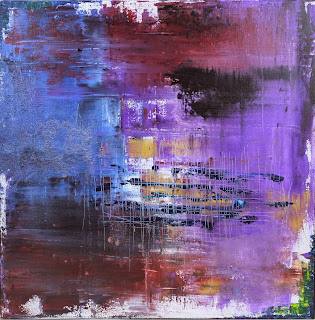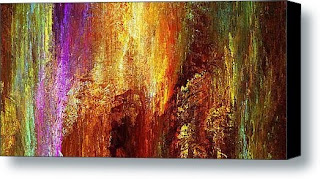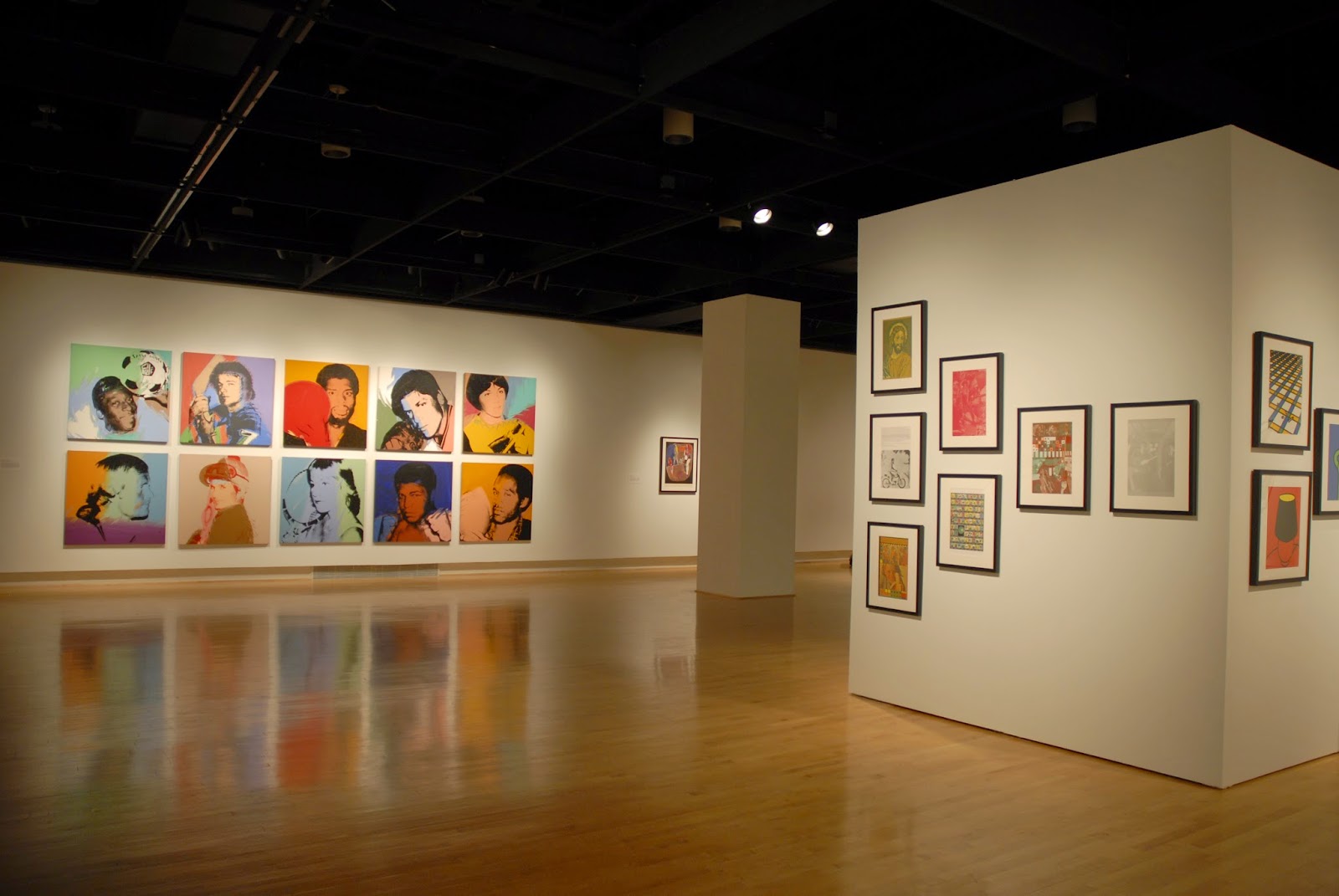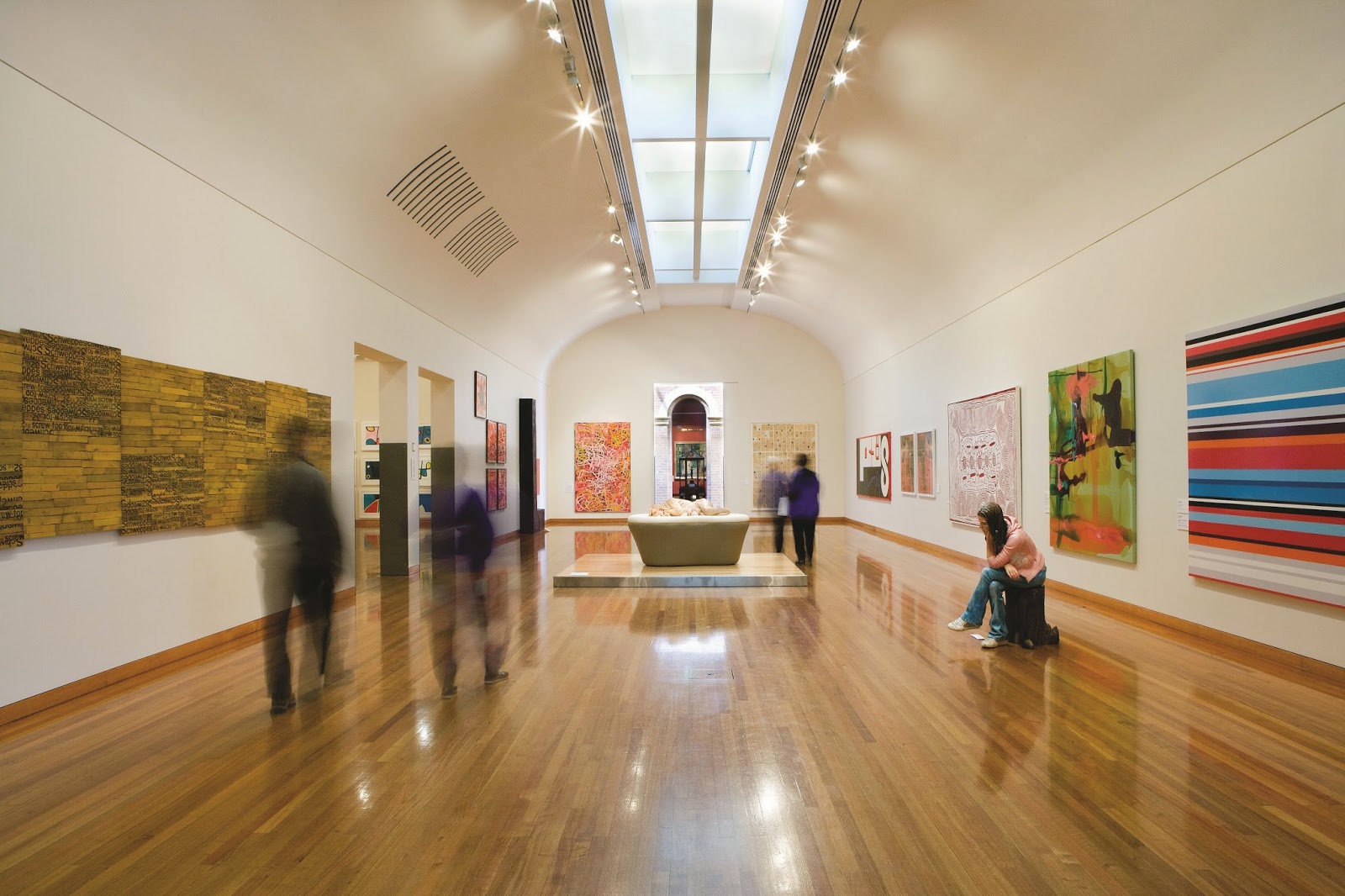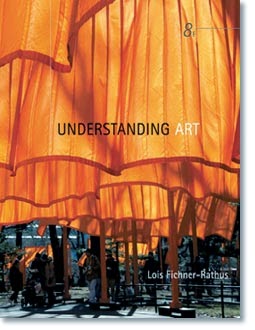 |
| Wildlife Art - Its History and Development |
Summary
Some of the earliest of all known art (pre-historic cave and rock art) features wildlife. However, it might be more properly regarded as art about food, rather than art about wildlife as such.
Then for a lot of the rest of the history of art in the western world, art depicting wildlife was mostly absent, due to the fact that art during this period was mostly dominated by narrow perspectives on reality, such as religions. It is only more recently, as society, and the art it produces, frees itself from such narrow world-views, that wildlife art flourishes.
Wildlife is also a difficult subject for the artist, as it is difficult to find and even more difficult to find keeping still in a pose, long enough to even sketch, let alone paint. Recent advances such as photography have made this far easier, as well as being artforms in their own right. Wildlife art is thus now far easier to accomplish both accurately and aesthetically.
In art from outside the western world, wild animals and birds have been portrayed much more frequently throughout history.
Art about wild animals began as a depiction of vital food-sources, in pre-history. At the beginnings of history the western world seems to have shut itself off from the natural world for long periods, and this is reflected in the lack of wildlife art throughout most of art history. More recently, societies, and the art it produces, have become much more broad-minded. Wildlife has become something to marvel at as new areas of the world were explored for the first time, something to hunt for pleasure, to admire aesthetically, and to conserve. These interests are reflected in the wildlife art produced.
The History and development of Wildlife Art...
Wildlife art in Pre-history.
Animal and bird art appears in some of the earliest known examples of artistic creation, such as cave paintings and rock art
The earliest known cave paintings were made around 40,000 years ago, the Upper Paleolithic period. These art works might be more than decoration of living areas as they are often in caves which are difficult to access and don't show any signs of human habitation. Wildlife was a significant part of the daily life of humans at this time, particularly in terms of hunting for food, and this is reflected in their art. Religious interpretation of the natural world is also assumed to be a significant factor in the depiction of animals and birds at this time.
Probably the most famous of all cave painting, in Lascaux (France), includes the image of a wild horse, which is one of the earliest known examples of wildlife art. Another example of wildlife cave painting is that of reindeer in the Spanish cave of Cueva de las Monedas, probably painted at around the time of the last ice-age. The oldest known cave paintings (maybe around 32,000 years old) are also found in France, at the Grotte Chauvet, and depict horses, rhinoceros, lions, buffalo, mammoth and humans, often hunting.
Wildlife painting is one of the commonest forms of cave art. Subjects are often of large wild animals, including bison, horses, aurochs, lions, bears and deer. The people of this time were probably relating to the natural world mostly in terms of their own survival, rather than separating themselves from it.
Cave paintings found in Africa often include animals. Cave paintings from America include animal species such as rabbit, puma, lynx, deer, wild goat and sheep, whale, turtle, tuna, sardine, octopus, eagle, and pelican, and is noted for its high quality and remarkable color. Rock paintings made by Australian Aborigines include so-called "X-ray" paintings which show the bones and organs of the animals they depict. Paintings on caves/rocks in Australia include local species of animals, fish and turtles.
Animal carvings were also made during the Upper Paleolithic period... which constitute the earliest examples of wildlife sculpture.
In Africa, bushman rock paintings, at around 8000 BC, clearly depict antelope and other animals.
The advent of the Bronze age in Europe, from the 3rd Millennium BC, led to a dedicated artisan class, due to the beginnings of specialization resulting from the surpluses available in these advancing societies. During the Iron age, mythical and natural animals were a common subject of artworks, often involving decoration of objects such as plates, knives and cups. Celtic influences affected the art and architecture of local Roman colonies, and outlasted them, surviving into the historic period.
Wildlife Art in the Ancient world (Classical art).
History is considered to begin at the time writing is invented. The earliest examples of ancient art originate from Egypt and Mesopotamia.
The great art traditions have their origins in the art of one of the six great ancient "classical" civilizations: Ancient Egypt, Mesopotamia, Greece, Rome, India, or China. Each of these great civilizations developed their own unique style of art.
Animals were commonly depicted in Chinese art, including some examples from the 4th Century which depict stylized mythological creatures and thus are rather a departure from pure wildlife art. Ming dynasty Chinese art features pure wildlife art, including ducks, swans, sparrows, tigers, and other animals and birds, with increasing realism and detail.
In the 7th Century, Elephants, monkeys and other animals were depicted in stone carvings in Ellora, India. These carvings were religious in nature, yet depicted real animals rather than more mythological creatures.
Ancient Egyptian art includes many animals, used within the symbolic and highly religious nature of Egyptian art at the time, yet showing considerable anatomical knowledge and attention to detail. Animal symbols are used within the famous Egyptian hieroglyphic symbolic language.
Early South American art often depicts representations of a divine jaguar.
The Minoans, the greatest civilization of the Bronze Age, created naturalistic designs including fish, squid and birds in their middle period. By the late Minoan period, wildlife was still the most characteristic subject of their art, with increasing variety of species.
The art of the nomadic people of the Mongolian steppes is primarily animal art, such as gold stags, and is typically small in size as befits their traveling lifestyle.
Aristotle (384-322 BC) suggested the concept of photography, but this wasn't put into practice until 1826.
The Medieval period, AD 200 to 1430
This period includes early Christian and Byzantine art, as well as Romanesque and Gothic art (1200 to 1430). Most of the art which survives from this period is religious, rather than realistic, in nature. Animals in art at this time were used as symbols rather than representations of anything in the real world. So very little wildlife art as such could be said to exist at all during this period.
Renaissance wildlife art, 1300 to 1602.
This arts movement began from ideas which initially emerged in Florence. After centuries of religious domination of the arts, Renaissance artists began to move more towards ancient mystical themes and depicting the world around them, away from purely Christian subject matter. New techniques, such as oil painting and portable paintings, as well as new ways of looking such as use of perspective and realistic depiction of textures and lighting, led to great changes in artistic expression.
The two major schools of Renaissance art were the Italian school who were heavily influenced by the art of ancient Greece and Rome, and the northern Europeans... Flemish, Dutch and Germans, who were generally more realistic and less idealized in their work. The art of the Renaissance reflects the revolutions in ideas and science which occurred in this Reformation period.
The early Renaissance features artists such as Botticelli, and Donatello. Animals are still being used symbolically and in mythological context at this time, for example "Pegasus" by Jacopo de'Barbari.
The best-known artist of the high Renaissance is Leonardo-Da-Vinci. Although most of his artworks depict people and technology, he occasionally incorporates wildlife into his images, such as the swan in "Leda and the swan", and the animals portrayed in his "lady with an ermine", and "studies of cat movements and positions".
Durer is regarded as the greatest artist of the Northern European Renaissance. Albrecht Durer was particularly well-known for his wildlife art, including pictures of hare, rhinoceros, bullfinch, little owl, squirrels, the wing of a blue roller, monkey, and blue crow.
Baroque wildlife art, 1600 to 1730.
This important artistic age, encouraged by the Roman Catholic Church and the aristocracy of the time, features such well-known great artists as Caravaggio, Rembrandt, Rubens, Velazquez, Poussin, and Vermeer. Paintings of this period often use lighting effects to increase the dramatic effect.
Wildlife art of this period includes a lion, and "goldfinch" by Carel Fabrituis.
Melchior de Hondecoeter was a specialist animal and bird artist in the baroque period with paintings including "revolt in the poultry coup", "cocks fighting" and "palace of Amsterdam with exotic birds".
The Rococo art period was a later (1720 to 1780) decadent sub-genre of the Baroque period, and includes such famous painters as Canaletto, Gainsborough and Goya. Wildlife art of the time includes "Dromedary study" by Jean Antoine Watteau, and "folly of beasts" by Goya.
Jean-Baptiste Oudry was a Rococo wildlife specialist, who often painted commissions for royalty.
Some of the earliest scientific wildlife illustration was also created at around this time, for example from artist William Lewin who published a book illustrating British birds, painted entirely by hand.
Wildlife art in the 18th to 19th C.
In 1743, Mark Catesby published his documentation of the flora and fauna of the explored areas of the New World, which helped encourage both business investment and interest in the natural history of the continent.
In response to the decadence of the Rococo period, neo-classicism arose in the late 18th Century (1750-1830 ). This genre is more ascetic, and contains much sensuality, but none of the spontaneity which characterizes the later Romantic period. This movement focused on the supremacy of natural order over man's will, a concept which culminated in the romantic art depiction of disasters and madness.
Francois Le Vaillant (1769-1832) was a bird illustrator (and ornithologist) around this time.
Georges Cuvier, (1769-1832), painted accurate images of more than 5000 fish, relating to his studies of comparative organismal biology.
Edward Hicks is an example of an American wildlife painter of this period, who's art was dominated by his religious context.
Sir Edwin Henry Landseer was also painting wildlife at this time, in a style strongly influenced by dramatic emotional judgments of the animals involved.
This focus towards nature led the painters of the Romantic era (1790 - 1880) to transform landscape painting, which had previously been a minor art form, into an art-form of major importance. The romantics rejected the ascetic ideals of Neo-Classicalism.
The practical use of photography began in around 1826, although it was a while before wildlife became a common subject for its use. The first color photograph was taken in 1861, but easy-to-use color plates only became available in 1907.
In 1853 Bisson and Mante created some of the first known wildlife photography.
In France, Gaspar-Felix Tournacho, "Nadar" (1820-1910) applied the same aesthetic principles used in painting, to photography, thus beginning the artistic discipline of fine art photography. Fine Art photography Prints were also reproduced in Limited Editions, making them more valuable.
Jaques-Laurent Agasse was one of the foremost painters of animals in Europe around the end of the 18th C and the beginning of the 19th. His animal art was unusually realistic for the time, and he painted some wild animals including giraffe and leopards.
Romantic wildlife art includes "zebra", "cheetah, stag and two Indians", at least two monkey paintings, a leopard and "portrait of a royal tiger" by George Stubbs who also did many paintings of horses.
One of the great wildlife sculptors of the Romantic period was Antoine-Louis Barye. Barye was also a wildlife painter, who demonstrated the typical dramatic concepts and lighting of the romantic movement.
Delacroix painted a tiger attacking a horse, which as is common with Romantic paintings, paints subject matter on the border between human (a domesticated horse) and the natural world (a wild tiger).
In America, the landscape painting movement of the Romantic era was known as the Hudson River School (1850s - c. 1880). These landscapes occasionally include wildlife, such as the deer in "Dogwood" and "valley of the Yosemite" by Albert Bierstadt, and more obviously in his "buffalo trail", but the focus is on the landscape rather than the wildlife in it.
Wildlife artist Ivan Ivanovitch Shishkin demonstrates beautiful use of light in his landscape-oriented wildlife art.
Although Romantic painting focused on nature, it rarely portrayed wild animals, tending much more towards the borders between man and nature, such as domesticated animals and people in landscapes rather than the landscapes themselves. Romantic art seems in a way to be about nature, but usually only shows nature from a human perspective.
Audubon was perhaps the most famous painter of wild birds at around this time, with a distinctive American style, yet painting the birds realistically and in context, although in somewhat over-dramatic poses. As well as birds, he also painted the mammals of America, although these works of his are somewhat less well known. At around the same time In Europe, Rosa Bonheur was finding fame as a wildlife artist.
Amongst Realist art, "the raven" by Manet and "stags at rest" by Rosa Bonheur are genuine wildlife art. However in this artistic movement animals are much more usually depicted obviously as part of a human context.
The wildlife art of the impressionist movement includes "angler's prize" by Theodore Clement Steele, and the artist Joseph Crawhall was a specialist wildlife artist strongly influenced by impressionism.
At this time, accurate scientific wildlife illustration was also being created. One name known for this kind of work in Europe is John Gould although his wife Elizabeth was the one who actually did most of the illustrations for his books on birds.
Post-impressionism (1886 - 1905, France) includes a water-bird in Rousseau's "snake charmer", and Rousseau's paintings, which include wildlife, are sometimes considered Post-impressionist (as well as Fauvist, see below).
Fauvism (1904 - 1909, France) often considered the first "modern" art movement, re-thought use of color in art. The most famous fauvist is Matisse, who depicts birds and fish in is "polynesie la Mer" and birds in his "Renaissance". Other wildlife art in this movement includes a tiger in "Surprised! Storm in the Forest" by Rousseau, a lion in his "sleeping Gypsy" and a jungle animal in his "exotic landscape". Georges Braque depicts a bird in many of his artworks, including "L'Oiseaux Bleu et Gris", and his "Astre et l'Oiseau".
Ukiyo-e-printmaking (Japanese wood-block prints, originating from 17th C) was becoming known in the West, during the 19th C, and had a great influence on Western painters, particularly in France.
Wildlife art in this genre includes several untitled prints (owl, bird, eagle) by Ando Hiroshige, and "crane", "cat and butterfly", "wagtail and wisteria" by Hokusai Katsushika.
Wildlife art in the 20th Century, Contemporary art, postmodern art, etc.
Changing from the relatively stable views of a mechanical universe held in the 19th-century, the 20th-century shatters these views with such advances as Einstein's Relativity and Freuds sub-conscious psychological influence.
The greater degree of contact with the rest of the world had a significant influence on Western arts, such as the influence of African and Japanese art on Pablo Picasso, for example.
American Wildlife artist Carl Runguis spans the end of the 19th and the beginnings of the 20th Century. His style evolved from tightly rendered scientific-influenced style, through impressionist influence, to a more painterly approach.
The golden age of illustration includes mythical wildlife "The firebird" by Edmund Dulac, and "tile design of Heron and Fish" by Walter Crane.
George Braque's birds can be defined as Analytical Cubist (this genre was jointly developed by Braque and Picasso from 1908 to 1912), (as well as Fauvist). Fernand Leger also depicts birds in his "Les Oiseaux".
There was also accurate scientific wildlife illustration being done at around this time, such as those done by America illustrator Louis Agassiz Fuertes who painted birds in America as well as other countries.
Expressionism (1905 - 1930, Germany). "Fox", "monkey Frieze, "red deer", and "tiger", etc by Franz Marc qualify as wildlife art, although to contemporary viewers seem more about the style than the wildlife.
Postmodernism as an art genre, which has developed since the 1960's, looks to the whole range of art history for its inspiration, as contrasted with Modernism which focuses on its own limited context. A different yet related view of these genres is that Modernism attempts to search for an idealized truth, where as post-modernism accepts the impossibility of such an ideal. This is reflected, for example, in the rise of abstract art, which is an art of the indefinable, after about a thousand years of art mostly depicting definable objects.
Magic realism (1960's Germany) often included animals and birds, but usually as a minor feature among human elements, for example, swans and occasionally other animals in many paintings by Michael Parkes.
In 1963, Ray Harm is a significant bird artist.
Robert Rauschenberg's "American eagle", a Pop Art (mid 1950's onwards) piece, uses the image of an eagle as a symbol rather than as something in its own right, and thus is not really wildlife art. The same applies to Any Warhol's "Butterflys".
Salvador Dali, the best known of Surrealist (1920's France, onwards) artists, uses wild animals in some of his paintings, for example "Landscape with Butterflys", but within the context of surrealism, depictions of wildlife become conceptually something other than what they might appear to be visually, so they might not really be wildlife at all. Other examples of wildlife in Surrealist art are Rene Magritte's "La Promesse" and "L'entre ed Scene".
Op art (1964 onwards) such as M. C. Escher's "Sky and Water" shows ducks and fish, and "mosaic II" shows many animals and birds, but they are used as image design elements rather than the art being about the animals.
Roger Tory Peterson created fine wildlife art, which although being clear illustrations for use in his book which was the first real field guide to birds, are also aesthetically worthy bird paintings.
Young British Artists (1988 onwards). Damien Hirst uses a shark in a tank as one of his artworks. It is debatable whether this piece could be considered as wildlife art, because even though the shark is the focus of the piece, the piece is not really about the shark itself, but probably more about the shark's effect on the people viewing it. It could be said to be more a use of wildlife in/as art, than a work of wildlife art.
Wildlife art continues to be popular today, with such artists as Robert Bateman being very highly regarded, although in his case somewhat controversial for his release of Limited-Edition prints which certain fine-art critics deplore.
 |
| Wildlife Art - Its History and Development |
 |
| Wildlife Art - Its History and Development |
 |
| Wildlife Art - Its History and Development |
 |
| Wildlife Art - Its History and Development |
 |
| Wildlife Art - Its History and Development |
 |
| Wildlife Art - Its History and Development |







